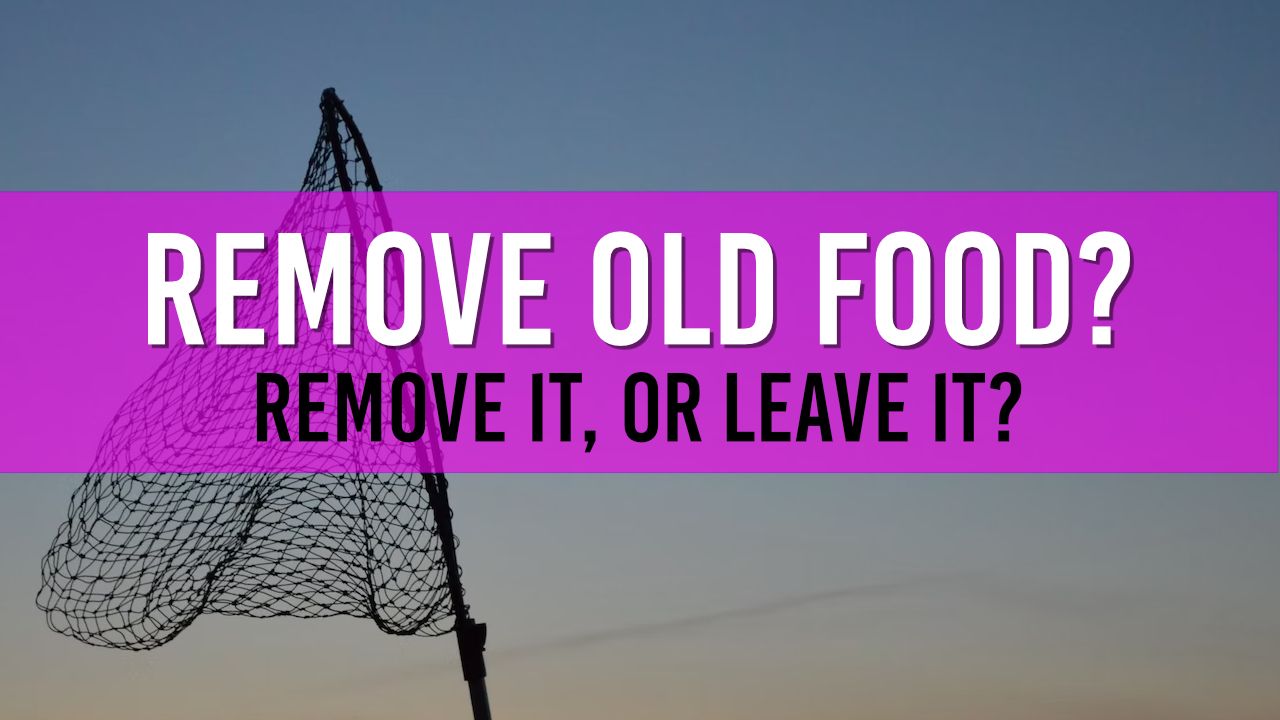Should I remove old food from my pond?
Fish food that has not been consumed within 10-15 minutes should be removed from your pond. If you leave uneaten food in your pond you not only increase the nitrates in your water, but can also attract “unwelcome pests” to your pond such as rats and other vermin.

Table of Contents
As an experienced pond owner, I can't stress enough the importance of maintaining a clean and healthy pond environment for your fish and aquatic plants. One critical aspect of pond maintenance is removing old food from the pond. This article will discuss why it's essential to remove old food, how to do it, and some preventative measures to avoid overfeeding.
Why removing old food is essential
Allowing old food to remain in your pond can lead to several issues:
- Water quality degradation: As old food decomposes, it releases ammonia and other harmful substances into the water, affecting the water quality and potentially harming your fish.
- Algae growth: Decomposing food provides nutrients that promote algae growth, leading to green pond water and oxygen depletion. Learn more about algae growth and prevention at PondAnswers.com.
- Pest attraction: Old food attracts pests such as rats, which can cause damage to your pond and introduce diseases. Discover more about why rats keep coming to your pond.
- Poor fish health: Overfeeding can lead to obesity and health issues for your fish, such as swim bladder disease. Read more on how to treat swim bladder disease in pond fish.
How to remove old food from your pond
- Skimmer or net: Use a pond skimmer or net to scoop out any visible food particles floating on the water surface.
- Pond vacuum: A pond vacuum can be used to remove old food and debris from the pond bottom, which may be harder to reach with a skimmer.
- Filter maintenance: Regularly clean and maintain your pond filter to ensure it's effectively removing waste and debris. Learn how to clean your filter box and how often to replace your pond filters.
- Pump maintenance: Keep your pond pump clean and in good working order, as it plays a vital role in circulating water and preventing stagnation. Find out more about how to clean your pond pump and why you need a pond pump.
Preventative measures to avoid overfeeding
- Feed the right amount: Follow the manufacturer's guidelines on the amount of food to provide your fish. It's better to feed small amounts multiple times a day than one large feeding. Learn more about what type of fish food to buy for your pond.
- Monitor fish behavior: Observe your fish's behavior during feeding. If they're not consuming all the food within a few minutes, reduce the amount you're providing.
- Automatic feeders: Consider using an automatic feeder to ensure consistent and measured feeding, helping to prevent overfeeding and old food accumulation.
- Seasonal feeding: Adjust your feeding schedule and food type based on the season, as fish have different nutritional needs during different times of the year. Find out more about feeding your pond fish in winter.
In conclusion, removing old food from your pond is crucial for maintaining a healthy environment for your fish and plants. By regularly monitoring and removing old food, you can prevent water quality degradation, algae growth, and pest attraction, as well as promote the overall well-being of your pond inhabitants.
Apart from food management, it's also essential to maintain proper pond care practices, such as:
- Regular water testing: Regularly test your pond water to monitor parameters like pH, ammonia, nitrite, and nitrate levels. This will help you address any water quality issues early on. Learn more about why your pond water may be dirty or smelly.
- Pond aeration: Ensure your pond has adequate aeration to provide oxygen for your fish and beneficial bacteria, and prevent oxygen depletion. Find out how to add more oxygen to your pond.
- Plant care: Properly care for your pond plants by providing the right nutrients, sunlight, and aquatic compost. Discover when is the best time to plant pond lilies and how often you should replace your aquatic compost.
- Pond liner maintenance: Inspect your pond liner for any damage or folds that could affect its functionality. Learn more about pond liner folds and whether to use a light or dark-colored pond liner.
By following these guidelines and implementing proper pond care practices, you can create a thriving ecosystem for your fish, plants, and other pond inhabitants. For more information on pond care and maintenance, visit PondAnswers.com, your go-to resource for all things related to garden ponds.

